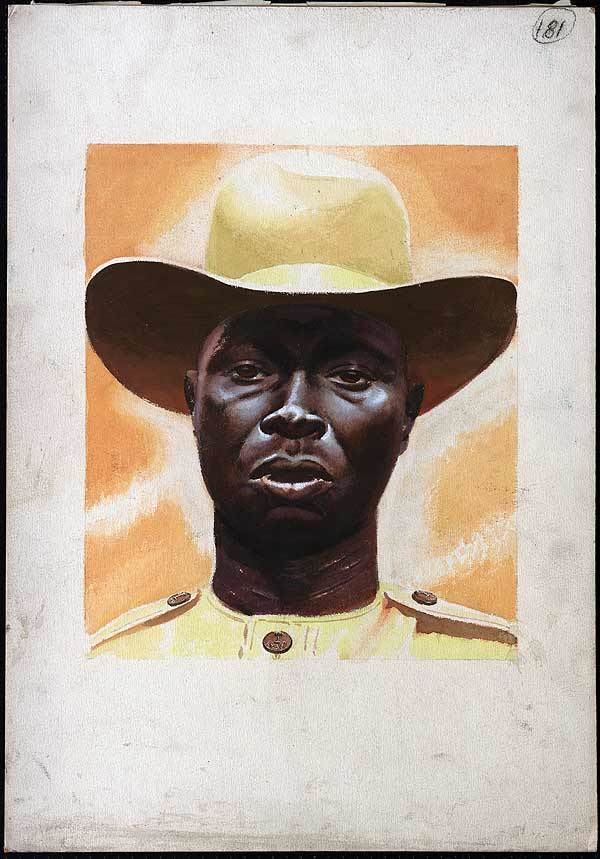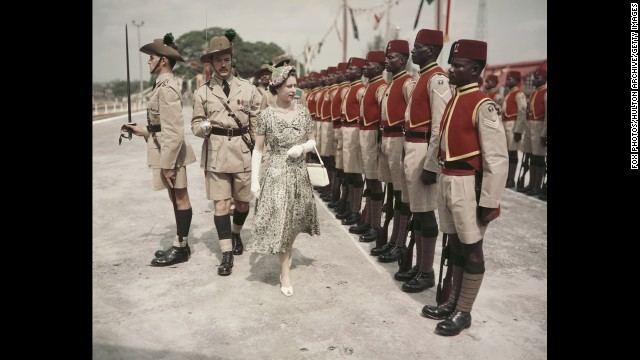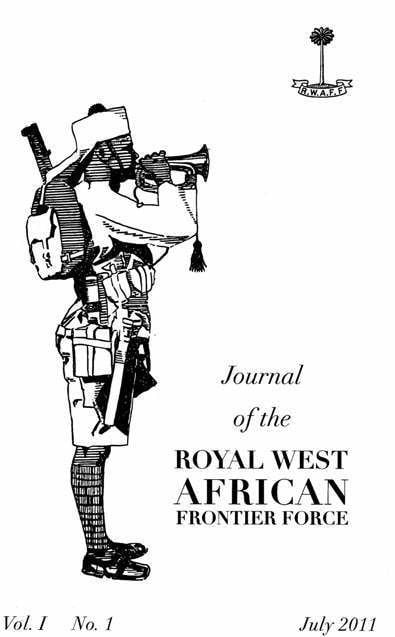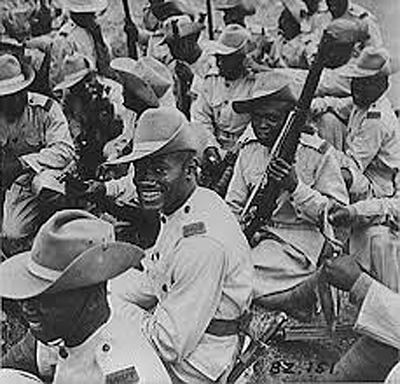 | ||
Founder Frederick Lugard, 1st Baron Lugard Similar King's African Rifles, Ghana Army, Ghana Armed Forces, Fourteenth Army, Chindits | ||
Royal west african frontier force
The West African Frontier Force (WAFF) was a multi-battalion field force, formed by the British Colonial Office in 1900 to garrison the West African colonies of Nigeria, Gold Coast, Sierra Leone and Gambia. In 1928, it received royal patronage, becoming the Royal West African Frontier Force (RWAFF).
Contents
- Royal west african frontier force
- Origins
- Uniforms
- First World War 19141918
- WAFF strength 19141918
- Battle honours 19141918
- Second World War 19391945 and after
- Commanders
- Inspectors General
- Colonels Commandant
- Colonels in Chief
- RWAFF disbanded at independence
- References

Origins

The decision to raise this force was taken in 1897 because of British concern at French colonial expansion in territories bordering on Northern Nigeria. The first troops were from that area and thought of by the British as "Hausas" - to the end of colonial rule, the Hausa language was a lingua franca in a very multi-tribal force, especially in Nigeria. The task of raising the new locally recruited force was entrusted to Colonel F.D. Lugard, who arrived in Nigeria in 1898. The following year, an interdepartmental committee recommended the amalgamation of all existing British colonial military forces in West Africa under the designation of the West African Field Force. Rivalry between Britain and France for control of the trade on the River Niger lead to the occupation of areas by the French, for instance at Illo, and the stationing of the Frontier Force at Yashikera and elsewhere in the region.
On formation in 1900, the WAFF comprised:

By 1908, the WAFF in Northern Nigeria comprised two battalions of infantry, two batteries of artillery and one company of engineers. The infantry battalions at that time had an establishment of 1,200 men, the artillery batteries had 175 men and there were 46 engineers. There were 217 British officers, non-commissioned officers and specialists. Mounted infantry detachments were subsequently raised. The standard weapon was the .303 Martini-Enfield carbine, and the force had 30 QF 2.95 inch mountain guns (quick-firing, man-portable pack howitzers) for the artillery.
Uniforms

The parade uniform of the RWAFF throughout its history was a distinctive one. It comprised khaki drill shorts, red fezes, scarlet zouave style jackets edged in yellow, and red cummerbunds. Artillery units wore blue jackets with yellow braid and engineers red with blue braid. African warrant officers were distinguished by yellow braiding on the front of their jackets. The badge on the fez was a palm tree. For field dress, khaki shirt, shorts, jersey and puttees were worn with a round kilmarnock cap.

British officers wore khaki serge or drill uniforms with tropical helmets (later bush or slouch hat) for review order and field dress. A green and black hackle was worn in the bush hats. for evening functions, a white mess uniform with rolled collar was worn with cummerbunds in blue for artillery and battalion colours for infantry officers.
Because of its identification with colonial rule, this uniform was replaced shortly after Nigerian independence by a high collared dark green tunic, peaked cap and light coloured trousers. In Ghana (formerly the Gold Coast), a scarlet and blue British style dress uniform was adopted.
First World War (1914–1918)
The West African Frontier Force first saw action during the occupation of the German Kamerun (present day Cameroon). The experience gained during in this campaign during 1914–16, in difficult terrain against stubborn resistance, made the WAFF a valuable reinforcement to the British Empire forces operating against the German Schutztruppe (colonial troops) in East Africa led by General Paul von Lettow-Vorbeck. A single battalion of the Gold Coast Regiment arrived in German East Africa in 1916, and was soon joined by four battalions of the Nigeria Regiment. All remained active in this theatre of war until 1918.
WAFF strength, 1914–1918
By the end of the First World War, regimental strengths were as follows:
Battle honours, 1914–1918
The following battle honours were awarded separately to the constituent regiments of the WAFF during the First World War:
Second World War (1939–1945) and after
In 1939, the RWAFF was transferred from Colonial Office to War Office control. Under the leadership of General George Giffard (GOC West Africa), the RWAFF served as a cadre for the formation of 81st (West Africa) Division and 82nd (West Africa) Division. Both divisions saw service during the Second World War, serving in Italian Somaliland, Abyssinia, and Burma. In 1947, the RWAFF reverted to Colonial Office control. After the war, the RWAFF comprised the Nigeria Regiment (five battalions, stationed at Ibadan, Abeokuta, Enugu, and two in Kaduna, with a field battery of artillery and a field company of engineers), the Gold Coast Regiment, and the Sierra Leone Regiment (including a company in Gambia). When Queen Elizabeth II visited Nigeria in 1956, she gave the Nigeria Regiment the title "Queen's Own Nigeria Regiment".
Despite the approach of independence, the military authorities were slow in commissioning African officers. For example, at the time of the Queen's visit, the 1st Battalion of the Nigeria Regiment had only two African officers, both lieutenants, Kur Mohammed (later assassinated with Abubakar Tafawa Balewa) and Robert Adebayo (commissioned in 1953 as the 23rd West African military officer). The American writer John Gunther, writing in 1953, did however report meeting "two or three smart young Negro officers of the West African Frontier Force" in Lagos. Gunther noted that all were former aides-de-camp and that he did not meet non-white ADCs in any of the other African colonies that he visited. Johnson Aguiyi-Ironsi was at that time the only African who had advanced to the rank of major. He became the first General Officer Commanding of the army of independent Nigeria.
Commanders
From 1901–1938, the WAFF (and later the RWAFF) was administered by an Inspector General. From 1945, the force was administered by a Colonel Commandant.
Inspectors General
Colonels Commandant
Colonels-in-Chief
The RWAFF received royal patronage through its Colonels-in-Chief:
RWAFF disbanded at independence
In 1957, the British colony of The Gold Coast obtained independence as Ghana and the Gold Coast Regiment was withdrawn from the RWAFF to form the Ghana Regiment of Infantry in the newly independent nation.
The RWAFF was finally disbanded in 1960 as the British colonies of Nigeria, Sierra Leone and The Gambia moved towards independence. The former RWAFF units formed the basis of the new national armies of their respective states.
